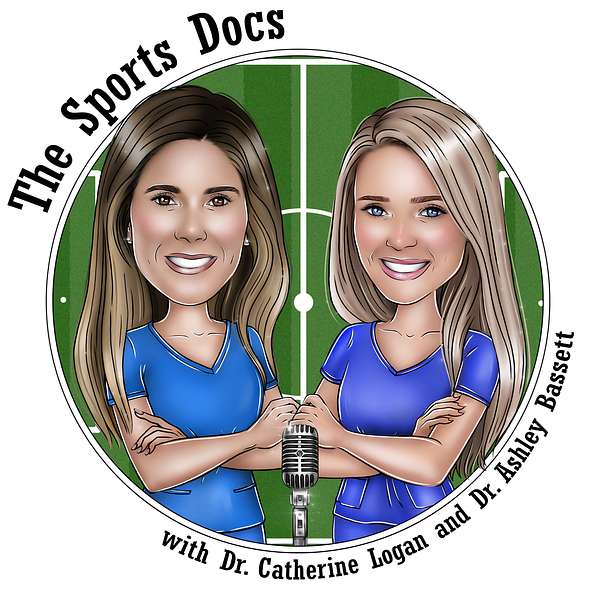
The Sports Docs Podcast
Sports medicine is a constantly evolving field, with hundreds of new articles published each month on the topic. This ever-growing wealth of information can make it challenging to stay updated on the newest approaches and techniques, and to know which data should actually change your practice. Join orthopedic surgeons, Dr. Catherine Logan and Dr. Ashley Bassett, as they chat about the most recent developments in sports medicine and dissect through all the noise.
On each episode of The Sports Docs podcast, the hosts will tackle a specific injury – from ACL tears to shoulder instability – and review the top research from various high-impact journals that month, including The American Journal of Sports Medicine, Arthroscopy: The Journal of Arthroscopic and Related Surgery, Sports Health, Journal of Shoulder and Elbow Surgeons, and more. The Sports Docs will also be joined by experts in the field of sports medicine – orthopedic surgeons, nonoperative sports medicine specialists, athletes, physical therapists, athletic trainers and others – to provide a fresh and well-rounded perspective based on their unique experiences.
The Sports Docs – Dr. Logan & Dr. Bassett – are friends & former co-residents from the Harvard Combined Orthopaedic Residency Program, who went onto esteemed sports medicine fellowships at The Steadman Clinic and The Rothman Institute, respectively. Dr. Logan practices in Denver, CO, and serves as Team Physician for Men's USA Lacrosse & as a Team Physician for U.S. Ski & Snowboard. Dr. Bassett is the director of the Women’s Sports Medicine Center at the Orthopedic Institute of New Jersey and practices across northern NJ, primarily in Morris and Sussex Counties.
Together, they will bring monthly conversations on how to care for athletes of all ages and levels of play, with a healthy mix of cutting-edge science and real-world application.
The Sports Docs Podcast
12. Dr. Eddie Chang: Blood Flow Restriction Therapy - Part II
We’re going to continue our discussion with Dr. Edward Chang and focus on the use of blood flow restriction therapy for both upper and lower extremity conditions.
Most of the literature about BFR focuses on the effects distal to the site of occlusion, but what about proximally? Our next paper explores that question a bit further. From the August 2021 issue of AJSM, the article is titled Blood Flow Restriction Training for the Shoulder – A Case for Proximal Benefit. This randomized controlled study compared the proximal muscle changes after 8 weeks of combined upper extremity BFR and low-intensity exercise versus low-intensity exercise alone.
Patrick McCulloch and colleagues at Houston Methodist concluded that the addition of BFR to the proximal arm resulted in greater muscle mass in both the upper extremity and the shoulder region, as well as increased internal rotation strength and endurance. Acute occlusion was associated with increased proximal muscle activation as measured by EMG. The authors suggest that occlusion-induced distal fatigue may contribute to enhanced activation of proximal muscles to compensate for fatigue of the distal muscles.
We’ll then shift our discussion to the use of BFR for lower extremity conditions, specifically after ACL reconstruction. Jorge Chala and his team published a systematic review titled Perioperative Blood Flow Restriction Rehabilitation in Patients undergoing ACL Reconstruction. This review concluded that data on the use of BFR after ACL surgery is very limited and heterogenous, but that most studies found significant benefits in muscle hypertrophy, strength and pain scores.
Then, from the March 2020 issue of AJSM, we wrap up with a randomized controlled trial titled Blood Flow Restriction Training Applied With High-Intensity Exercise Does Not Improve Quadriceps Muscle Function After ACL Reconstruction. Curran et al randomized patients to one of four exercise groups: concentric, eccentric, concentric with BFR and eccentric with BFR. The exercise program was initiated 10 weeks post-op and continued for 8 weeks. The authors reported no difference in muscle volume, strength or activation at any time point across all groups.